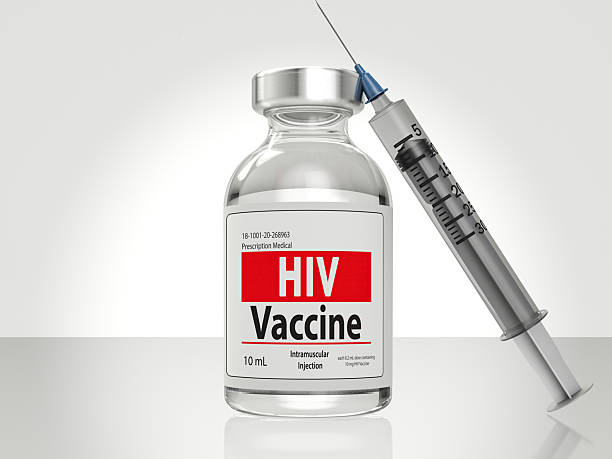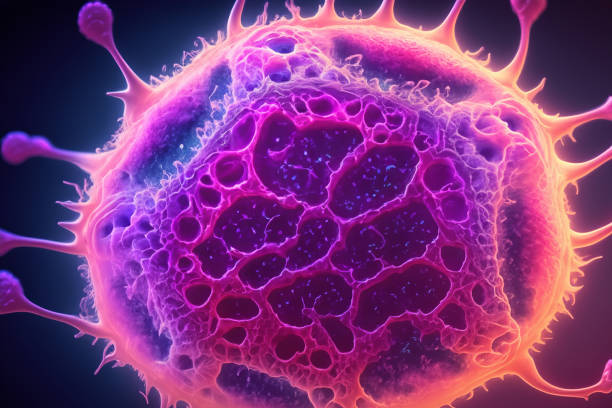For more than 40 years, scientists have been chasing a singular and elusive goal: a vaccine that could stop HIV in its tracks. Unlike other viruses, HIV is a master of disguise—constantly mutating, shrouding itself in sugar-coated shields, and selectively hiding the parts of its structure that might betray it to the immune system. Every time researchers thought they had cornered the virus, it slipped away with chameleon-like agility.
Traditional vaccine approaches—so successful against pathogens like measles or polio—have repeatedly failed to outmaneuver HIV. The key stumbling block? Training the immune system to produce broadly neutralizing antibodies (bnAbs), rare molecules that can strike at the conserved core of HIV across its many variants. Generating these bnAbs is like asking a novice painter to recreate a masterpiece after just one lesson. But a team of researchers may have just found a way to teach the immune system, step-by-step, to paint that picture.
A New Strategy Comes into Focus
In a breakthrough study published in Science, scientists from IAVI and Scripps Research have reported results from two separate but complementary Phase 1 clinical trials that demonstrate an innovative vaccination strategy might finally be able to teach the immune system how to generate bnAbs. This approach, based on a technique known as “germline targeting,” doesn’t try to skip to the final masterpiece. Instead, it carefully guides immune cells through each stage of development—starting with a priming dose that wakes up rare, precursor immune cells and continuing with carefully designed boosters that shepherd these cells along a path toward producing effective bnAbs.
The trials—named IAVI G002 and IAVI G003—involved nearly 80 participants from both North America and sub-Saharan Africa, the region most affected by HIV. For the first time, scientists not only activated the right kind of immune cells in humans but also showed that those cells could be pushed further along their evolutionary journey with a carefully timed booster shot.
From Spark to Flame: Priming the Immune System
At the heart of this strategy is a new understanding of how B cells—the antibody-producing workhorses of the immune system—develop. Broadly neutralizing antibodies don’t arise overnight. They begin as rare, naïve B cells with the potential to recognize unchanging regions of HIV. The challenge lies in finding and activating these cells and then guiding them through a complex process of mutation and maturation.
That first step—activation—is called priming. In the IAVI G003 trial, researchers focused solely on this stage. Conducted in South Africa and Rwanda, the study gave participants two doses of a specially engineered priming vaccine using mRNA technology. The results were astonishing: 94% of participants developed what are known as VRC01-class responses—a type of immune reaction that targets a stable, vulnerable part of the HIV virus known to be crucial for its ability to infect human cells.
These findings are more than just numbers. They represent proof that the right immune cells exist in African populations and can be successfully activated—debunking any lingering fears that a vaccine developed elsewhere might falter in high-burden regions.
Beyond the Spark: Guiding Immune Maturity
While the G003 trial focused on the first step, the G002 trial, conducted in North America, took it a step further—literally. Here, scientists introduced a second shot, a booster dose that differed slightly from the original priming vaccine. This is where the strategy gets particularly clever: by changing the booster, researchers encouraged the immune system to adapt, refine, and improve its response—a process known as “heterologous boosting.”
The results spoke volumes. Every participant who received both the prime and the distinct booster developed VRC01-class responses, and over 80% demonstrated “elite” antibody traits—mutations that signal strong progression toward true broadly neutralizing antibodies. This level of immune sophistication, seen after just two doses, surpassed expectations.
Interestingly, participants who received two priming doses without the booster produced weaker responses. This finding suggests that variety in the vaccine sequence matters—just like a teacher switching up lessons to keep students engaged and progressing.
Why mRNA Was a Game-Changer
The COVID-19 pandemic thrust mRNA vaccine technology into the spotlight, and its role in this HIV research cannot be overstated. Traditional vaccines take years to design and manufacture, but mRNA platforms allow scientists to encode instructions for building proteins directly into the vaccine—speeding up production and enabling rapid iteration.
Both the G002 and G003 trials used mRNA to deliver their priming vaccines. This not only accelerated the research timeline but also allowed for precise targeting of the desired B cell populations. And crucially, these mRNA vaccines produced strong, targeted immune responses with acceptable safety profiles, even in genetically diverse populations.
Although there were reports of skin reactions in a minority of participants—such as itching or hives—these were mostly mild and treatable with antihistamines. Researchers are already exploring dose adjustments and mitigation strategies to further reduce side effects.
A Global Vision Backed by Local Impact
What makes this study particularly noteworthy is its intentional inclusion of African participants in early-phase trials. Too often, vaccine research centers on populations in high-income countries, only to find later that the results don’t translate to regions where the need is greatest. By involving South African and Rwandan participants from the outset, the researchers ensured that the vaccine candidates would be evaluated in the very communities that stand to benefit the most.
Julien Nyombayire, one of the lead investigators in Rwanda, underscored this point: “These results underscore the importance and capability of global partnerships to drive cutting-edge science. It was essential to conduct this evaluation in African populations to ensure that our results reflect the safety and immunologic data from high-burden communities.”
The immune responses, he noted, were remarkably consistent between African and North American participants—a promising sign for a vaccine intended for global use.
The Science of VRC01-Class Antibodies
To understand the significance of this stepwise vaccine strategy, it’s helpful to appreciate what VRC01-class antibodies actually do. These antibodies are named after VRC01, one of the most studied bnAbs in HIV research, known for its ability to neutralize a broad spectrum of HIV strains. VRC01 targets a specific site on the virus’s envelope protein—the part that HIV uses to dock onto and enter human cells.
What makes this target so important is its stability: unlike other parts of the virus, this region rarely mutates. That makes it an ideal bullseye for a vaccine. But the immune system doesn’t typically aim there on its own. It must be taught, trained, and encouraged—and that’s what this vaccination strategy does.
By first activating B cells capable of recognizing this region, and then guiding their maturation through booster shots, scientists hope to create a population of cells that can produce fully developed bnAbs over time.
Not the Destination—But the Right Road
It’s important to emphasize that these trials were never expected to produce mature bnAbs outright. Instead, they were designed to test whether the immune system could be nudged in that direction—and they succeeded. These are early steps, but they are on the right path, and the direction is clearer than ever before.
William Schief, senior author of the study and director at IAVI’s Neutralizing Antibody Center, explained it best: “We’ve now shown in humans that we can initiate the desired immune response with one shot and then drive the response further forward with a different second shot. We’ve also shown that the first shot can work well in African populations. That’s critical for a vaccine with global aspirations.”
Future trials are already in planning stages. A new study in South Africa will test the same prime-boost regimen seen in G002 but at lower doses, informed by the elite responses and side-effect profiles observed in the earlier trials.
Toward a New Era of Vaccine Design
Beyond the specifics of HIV, this research signals a larger shift in how vaccines might be developed in the future. Rather than relying on the body’s immune system to stumble across the right antibodies by chance, scientists can now design immunogens—the active ingredients in vaccines—that intentionally guide the immune system step by step.
Mark Feinberg, President and CEO of IAVI, believes this could be transformative: “These trials provide proof of concept for a stepwise approach to eliciting custom-tailored responses—not just for our vaccine, but for the vaccine field at large. A vaccine would be a tremendous step forward for global health and could help bring an end to the HIV pandemic.”
The lessons learned from this approach—about immune targeting, maturation, and strategic boosting—could be applied to other challenging pathogens, from malaria to hepatitis C to future pandemics yet to emerge.
A Future Within Reach
There’s still a long road ahead before an HIV vaccine becomes widely available. Many questions remain: How many boosters will be needed? Will the responses seen in these early trials translate into lasting protection? Can the cost and distribution challenges be overcome in low-resource settings?
But for the first time in decades, there is a sense of cautious optimism. The immune system’s rarest weapons—broadly neutralizing antibodies—are no longer out of reach. They can be summoned, step by step, with thoughtful design and patient guidance.
And that is how science wins—not in a single breakthrough, but in a sequence of precisely placed steps that bring humanity closer to solving one of the most complex puzzles of our time.
Reference: Jordan R. Willis et al, Vaccination with mRNA-encoded nanoparticles drives early maturation of HIV bnAb precursors in humans, Science (2025). DOI: 10.1126/science.adr8382






